.jpg)
BMW X7 2024 Review & Pricing
.jpg)
Introduction
When BMW launched ushered in its largest SUV at the time, the X5, in the late 1990s, we wondered how long we’d have to wait for it to make a competitor to the Land Rover Range Rover.
In the absence of such a vehicle, the X5 was often seen as an adversary, but they were never really on the same page.
Yes, the BMW X5 was – and still is – a quality machine, but it wasn’t a direct rival to the Range Rover.
We finally got our answer nearly 20 years later when the X7 arrived on our roads in 2019.
Fast forward a few years, and the X7 has had its first-ever mid-life facelift, featuring a heavily revised front end.
Its screams of lushness and the luxury side of things just got even louder.
Select's rating score* - 4.5 / 5
At A Glance
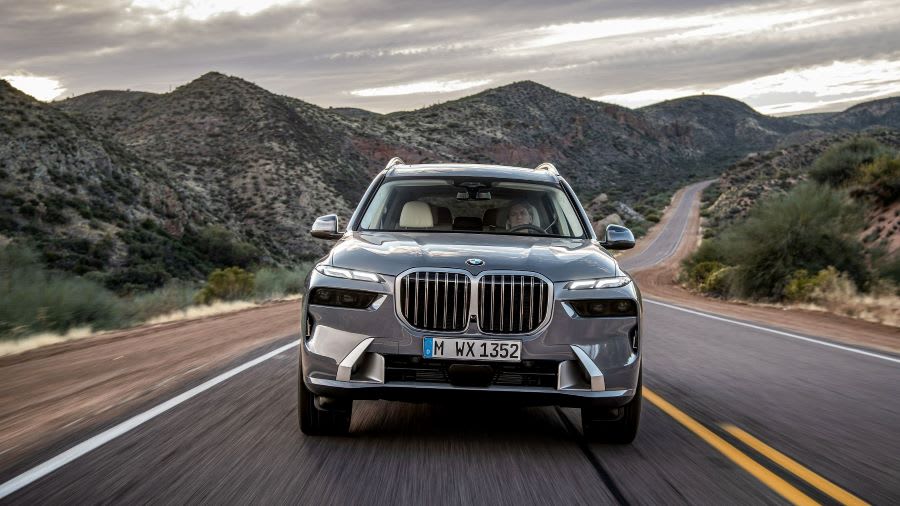
As with many BMWs nowadays, the looks you get depend on the trim you choose.
There are three grades on the X7: Excellence, M Sport and M. And it's a full-on seven-seater as standard.
Both feature thinned-out, two-tier headlights, with a small strip of bodywork separating the top light from the bottom light on each side.
This bodywork then extends downwards, creating space for air intakes at either side, which is more pronounced on the M Sport and M versions, looking like chiselled cheekbones.
Black décor is added to the exterior as you move through the trim levels, too, with the lower grille entirely black on the M model, adding to the sporty looks. Meanwhile, it's a reduced size on the Excellence model, with more body colour and less black.
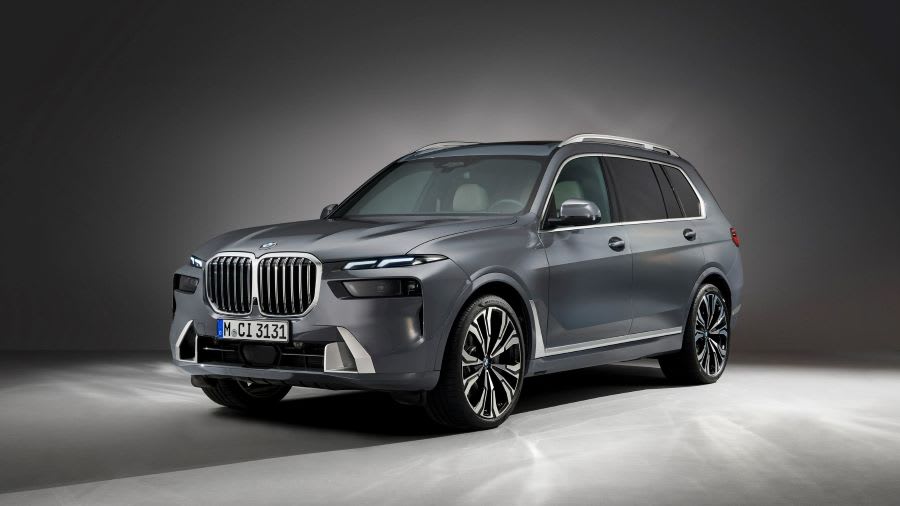
There is less personality elsewhere on the Bimmer, but the sides bulge slightly, with a small step underneath the doors and a more pronounced black strip running along it on the M version.
The rear looks square, especially on the Excellence trim, although there's black styling on the M model, running along the bottom and around the exhaust tips to create a bow-tie-like effect.
The X7 has always had somewhat controversial looks and doesn’t wear its uniform quite as naturally as the X5. But it’s a heck of a size and certainly has road presence in abundance.
Key Features
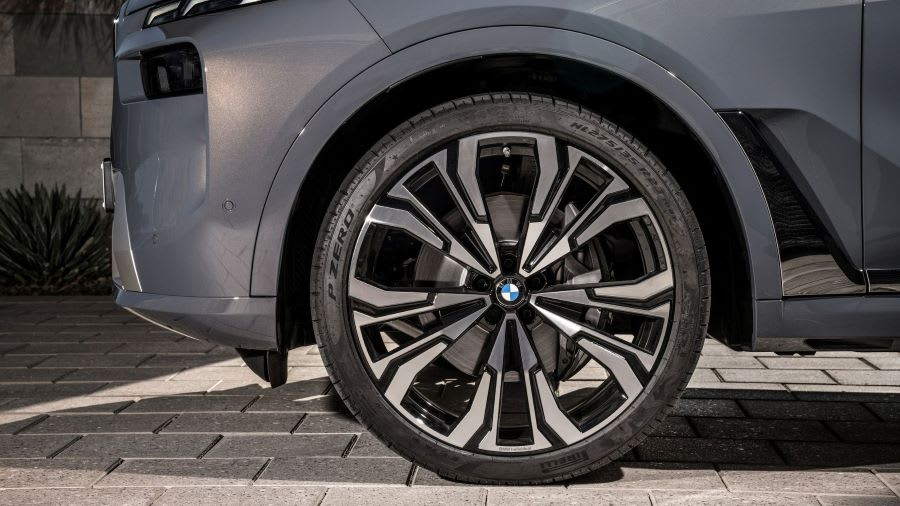
The Excellence trim is well equipped, featuring 21-inch alloys, a 14.9-inch infotainment touchscreen, a 12.3-inch digital instrument screen, acoustic glass and roof rails. You also get adaptive LED headlights, an automatic two-section tailgate, a sports leather steering wheel, illuminated door sills and air suspension, plus four-zone climate control and electric memory seats in the front.
The M Sport features upgraded brakes and some sporty touches to the exterior, as we previously described.
The M version gets a limited-slip differential to improve the handling, plus four-wheel steering.
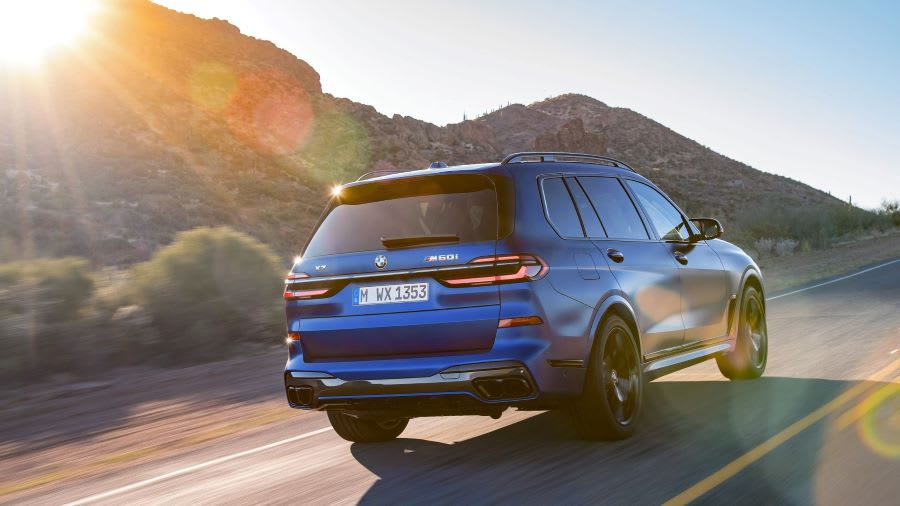
Meanwhile, the Excellence and M Sport trims have a choice of two 3.0-litre straight-six engines – the 381PS petrol xDrive40i and the 352PS diesel xDrive40d.
The M version has only one – the mighty 530PS 4.4-litre V8 petrol M60i xDrive.
As you might expect, the ‘x’ in xDrive means four-wheel drive, and that’s standard across the range, along with an eight-speed automatic gearbox.
The BMW X7 is enormous – it’s bigger than a Range Rover.
But does bigger mean better?
Performance & Drive
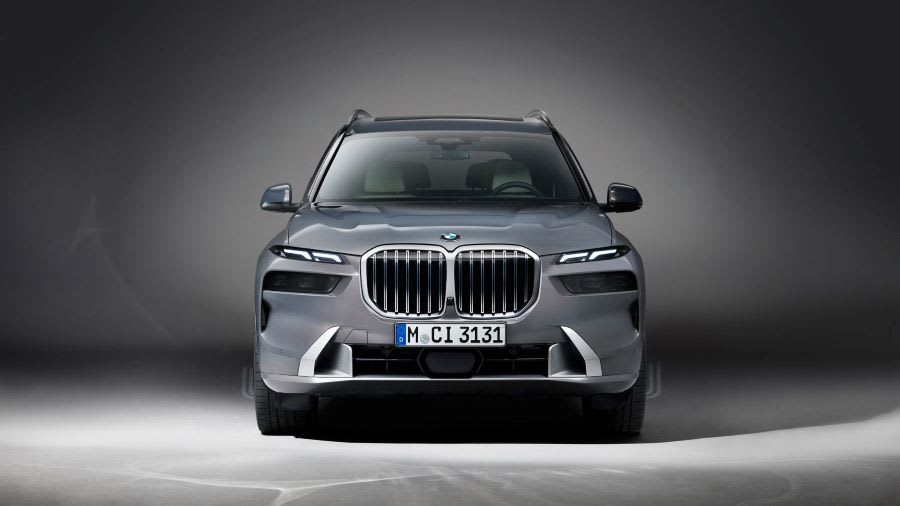
We have tested the petrol xDrive40i, which is plenty quick enough, getting from 0-62mph in 5.8 seconds.
Despite its performance, you only notice it when hammering the accelerator pedal. It offers quiet cruising with plenty of power in reserve when you need it, effortlessly stacking up the miles.
Admittedly, if long-distance driving is your thing, then you might be better off with the diesel. The oil burner loses less than 30PS over the equivalent petrol but provides more low-end shove off the line, making it perfect for towing a caravan or a horsebox.
It is also reasonably quiet, and while some 'diesel' noise is inevitable, it's well-refined and minimises the typical rattle you'll associate with the average diesel unit.
Then, of course, there's always the mighty M60i, which is the choice of the inner child, powering its way to 62mph in just 4.7 seconds from a standing start.
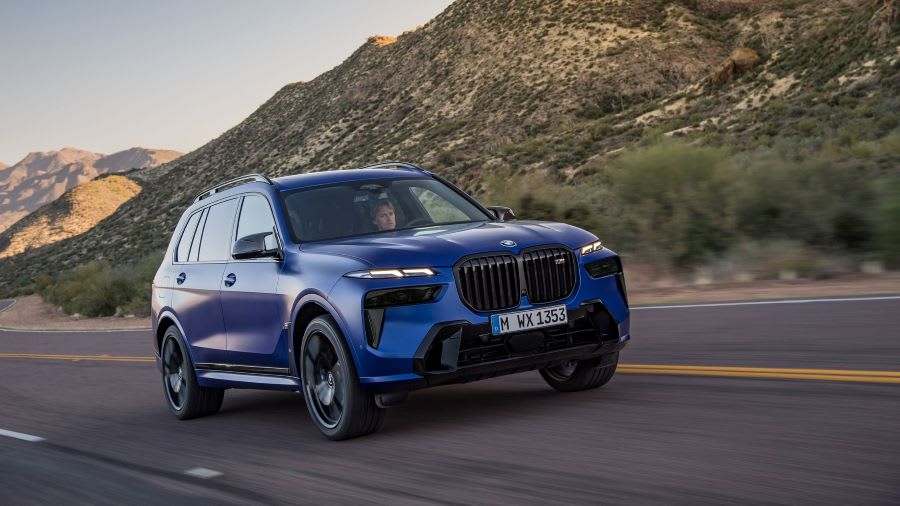
In all models, the automatic transmission is excellent, shifting decisively and smoothly and changing down with only the slightest delay when you bury the throttle.
Paddles behind the steering wheel can adjust the gearshifts manually if you want to.
The latest BMW X7 handles well for a big SUV, feeling impressively agile through the bends, especially if you put it in Sport mode.
Of course, you can’t judge a car like this by its ability to tackle a corner. But the steering weights up very nicely, with a decent amount of feedback and precision to help you navigate bendy rural back roads.
While the M60i is the best handling of the lot, thanks to its limited-slip differential, which aids grip at the rear, there’s only so much engineering can do to counteract mother nature.
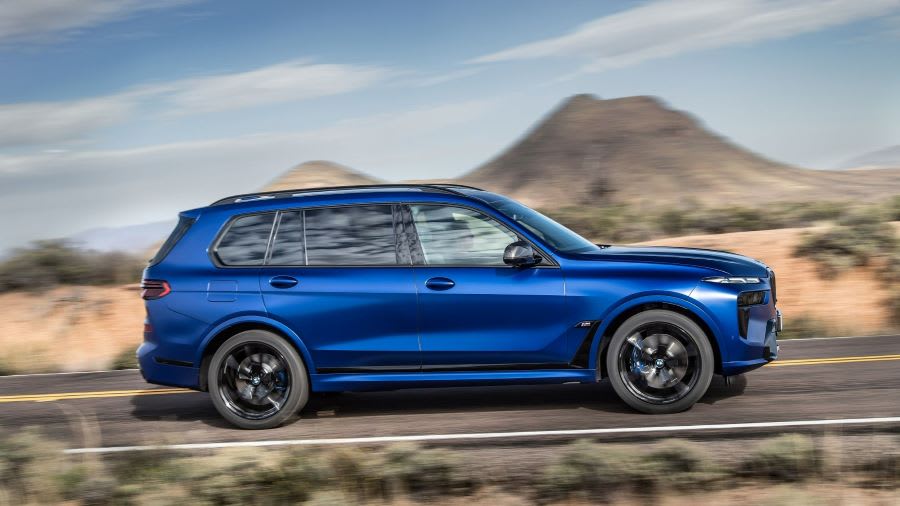
The result is some noticeable body lean in the bends thanks to its high centre of gravity, although anti-roll bars in the M60i help to limit it as much as possible.
The four-wheel steering also helps reduce the turning circle at low speeds, but it’s not included as standard unless you have the M60i.
You couldn't necessarily call it 'fun' to drive, but the model is impressive for its size.
Despite its large 21-inch wheels, it’s also exceptionally comfortable, thanks to the well-designed air suspension, which helps to smooth out bumps and creases in the road.
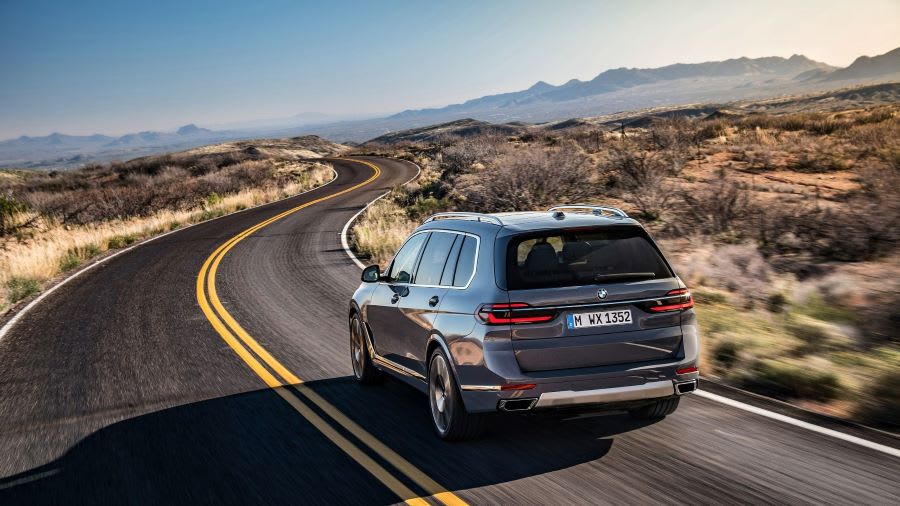
Wind noise and vibrations through the tyres are well contained.
Of course, if it’s going to rival the Range Rover, the BMW X7 has to be capable of off-roading.
While it does well, this is because of the xOffRoad Pack, which improves protection underneath the vehicle and gives you a terrain selector to tell the car what sort of surface its wheels are sitting on.
The BMW X7 is relatively adept at tackling an off-road surface. But if you're going to be driving through bogs and swamps a lot, we'd be reluctant to pick it over a Range Rover, which has a long-standing track record of brilliantly tackling the rough stuff.
Running Costs & Emissions
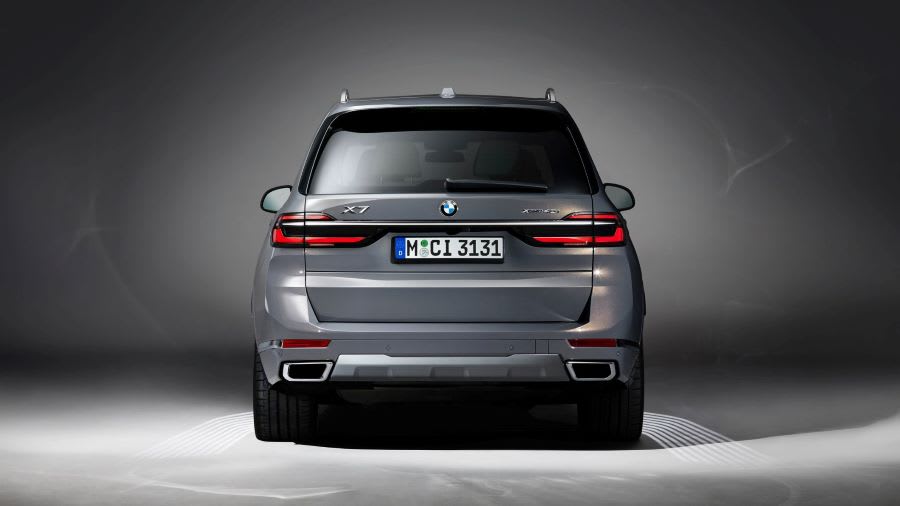
The xDrive40i petrol engine manages 30.7mpg, producing 210g/km CO2. If that's not good enough, then the xDrive40d diesel could offer a solution. This model ups the fuel economy figures to 37.1mpg and drops the CO2 emissions down a notch to 200g/km.
Those wanting to save money won't want to lease the M60i, which can only manage 23.1mpg, emitting a whopping 278g/km CO2. Admittedly, these figures aren't impressive, especially given the diesel can't even break the 40mpg barrier, but they're still pretty competitive for a big, heavy SUV.
However, company car users are likely to be put off, too, as all of them, including the diesel, are in the top band for Benefit In Kind tax.
If that’s a deal breaker, though, sadly, there are no hybrid options, and BMW says it has no plans to introduce these for the foreseeable future, but there are alternatives, which we’ll come on to later.
Interior & Technology
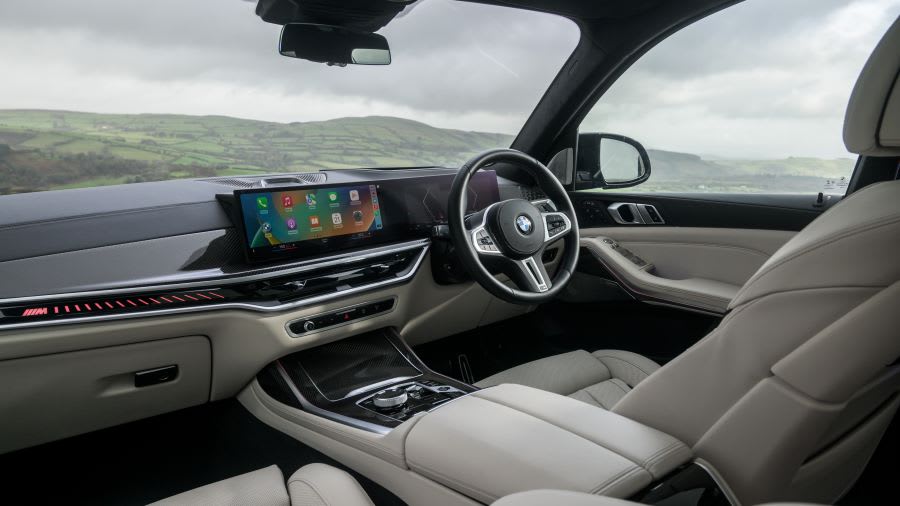
If you’re looking for a functional and sophisticated interior, the BMW X7 has you covered.
Admittedly, some X7s have a very dark colour scheme inside, and some lighter dual-coloured options add much-needed luxury to the cabin.
Nevertheless, the Bimmer is impressive, albeit in quite a modest way. Those seeking ostentatiousness might be disappointed, though.
One of the significant upgrades to the facelifted X7 is a new infotainment system, which includes the latest version from BMW, known as Operating System 8.
The large screen sits within a single unit, merged onto the neighbouring digital instrument screen, so it looks like one mega-ultra-widescreen display.
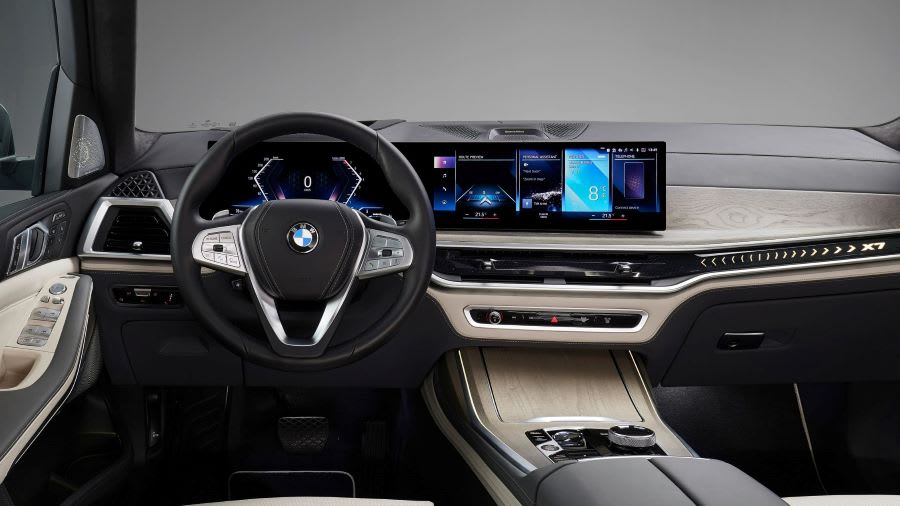
As you'd expect, the system is straightforward, helped by the screen’s ultra-responsiveness, high resolution and intuitive menu layout.
Of course, BMW’s iDrive rotary dial adds to the convenience, although some may like to try the newly improved voice control, which is one of the most reliable we’ve used. However, it’s by no means perfect and prone to the odd misinterpretation.
Our only gripe is that BMW has now started removing physical climate control buttons from its interiors, forcing you into the screen's menus to adjust the temperature. This is usually frowned upon, as you must divert your attention from the road to jab away at the screen. But the rotary dial and voice control help get around this issue.
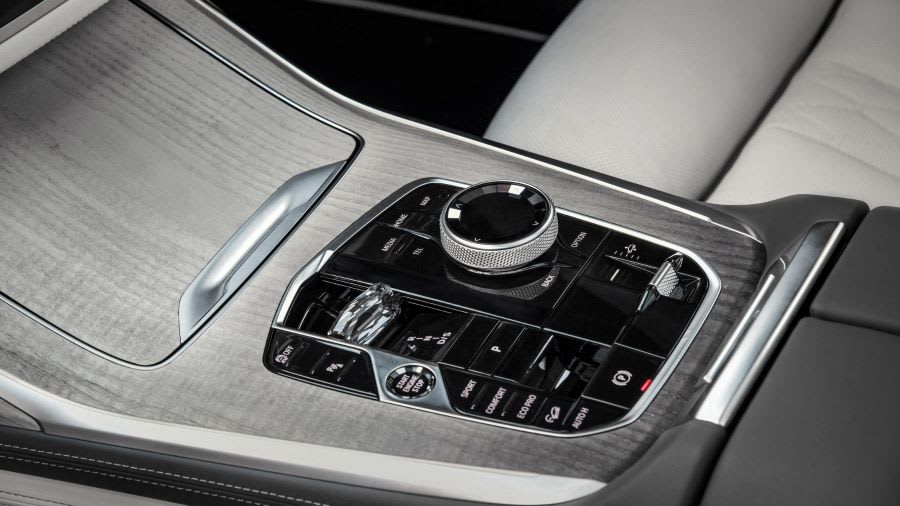
In addition, the temperature settings remain on the screen at all times, so you don’t need to keep diving into menus to find out what you’ve got it set to.
We would still rather have physical controls, but BMW is the only manufacturer so far to pull off touchscreen temperature adjustments without the usual infuriation that comes with doing the same in other cars.
Practicality & Boot Space
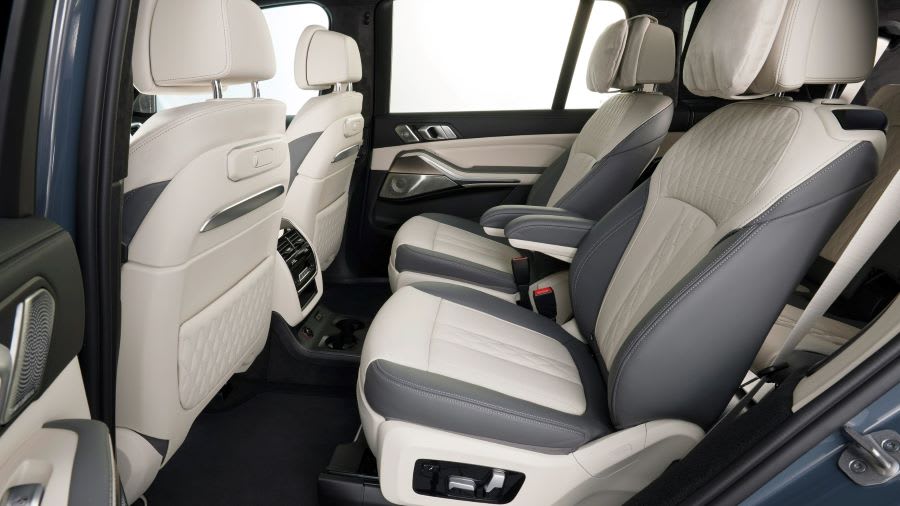
The BMW X7’s seating position is typically high, as you’d expect, and moving the seats about is simple thanks to the electric adjustment, which is included as standard.
It is very comfortable to sit in, and, unsurprisingly, the Bimmer is not short on headroom or legroom in the front or middle rows.
You can expect seven seats as standard and the third row is also impressively spacious, offering more room than the BMW X7’s main rivals, including the Range Rover and Land Rover Discovery. Indeed, accessing the third row of chairs from the rear doors is easier than you'd imagine.
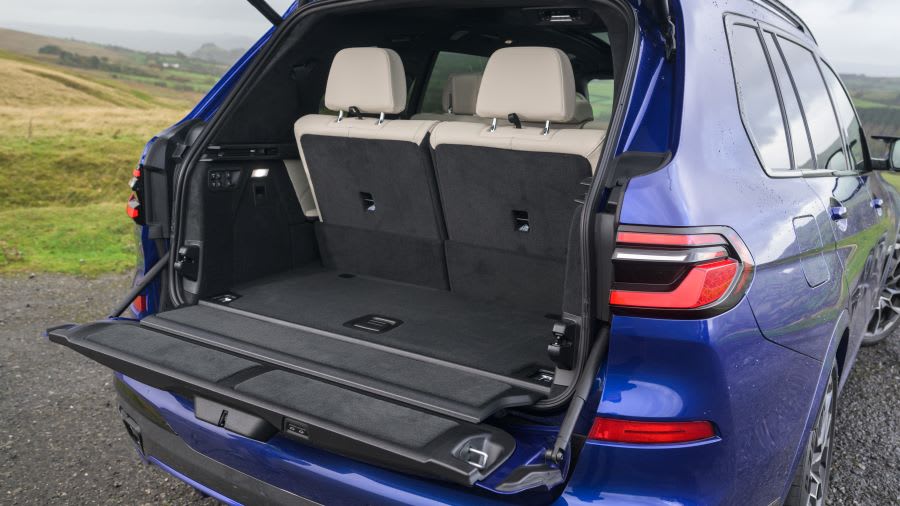
If you don't need seven seats and want some additional luxuriousness, the second tier can be replaced by two larger seats, creating a six-seater.
Visibility-wise, the pillars at the front have been kept as thin as possible, so, helped by the panoramic view of the road, you shouldn't have any problems looking out of the front.
The rear is a problem, though. Although the pillars aren’t thick, BMW has installed a large black border around the rear window's peripheries, which significantly limits your view.
Thankfully, front and rear parking sensors and surround cameras are standard across the range, while the BMW X7 can also park itself.
The four-zone climate control means those on each end of the second row of seats can adjust the temperature. Meanwhile, the entire bench can slide forward and backwards at the touch of a button.
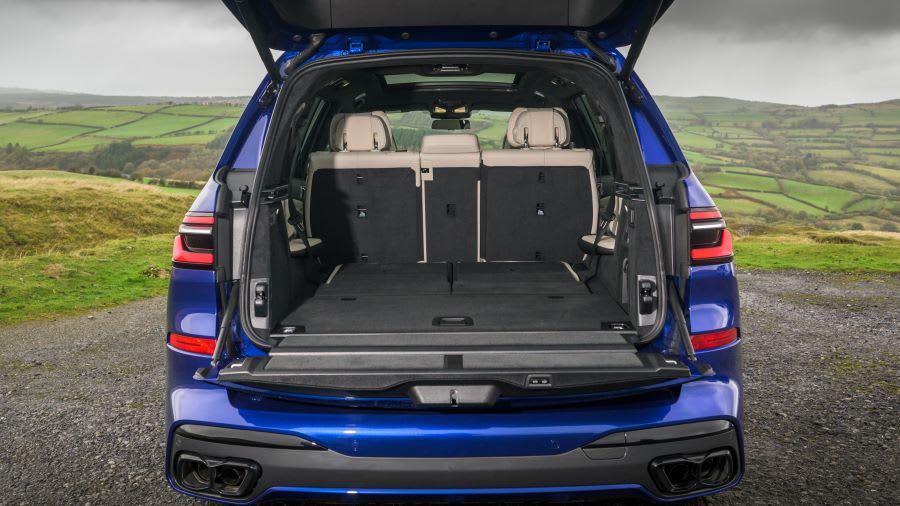
You will find plenty of storage spaces inside the cabin, plus some underfloor storage in the boot.
Speaking of which, boot space measures 326 litres with all seven seats in place, increasing to 750 litres with the back row of seats folded down.
Cargo capacity bloats to a massive 2,120 litres if you fold the middle row down in a versatile 40:20:40 configuration. Some vans offer less space than that!
Safety
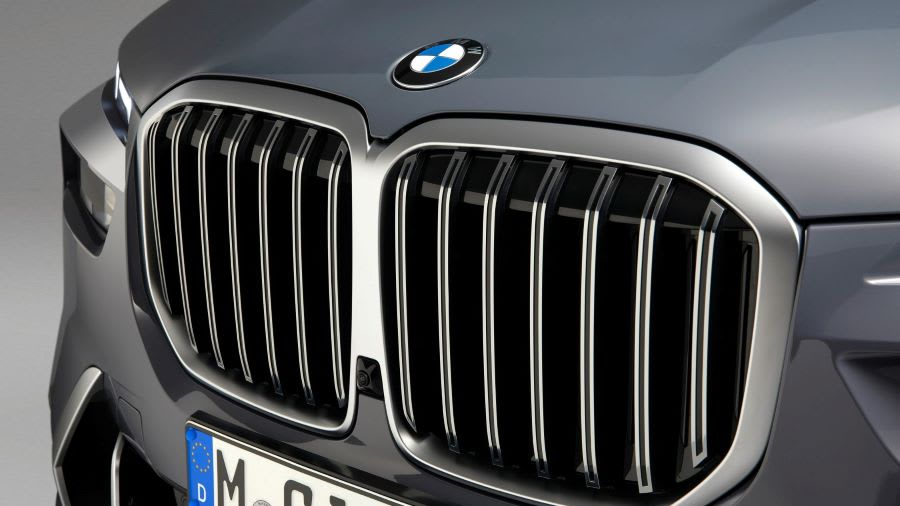
Despite being around for a few years now, the BMW X7 still needs to be put through its paces by Euro NCAP, so there's no official safety rating.
Nevertheless, there should be no concerns, as 14 of the last 16 BMW cars it’s crash-tested have earned a five-star rating.
That includes the all-electric BMW iX, the last SUV to be collision-tested in 2021.
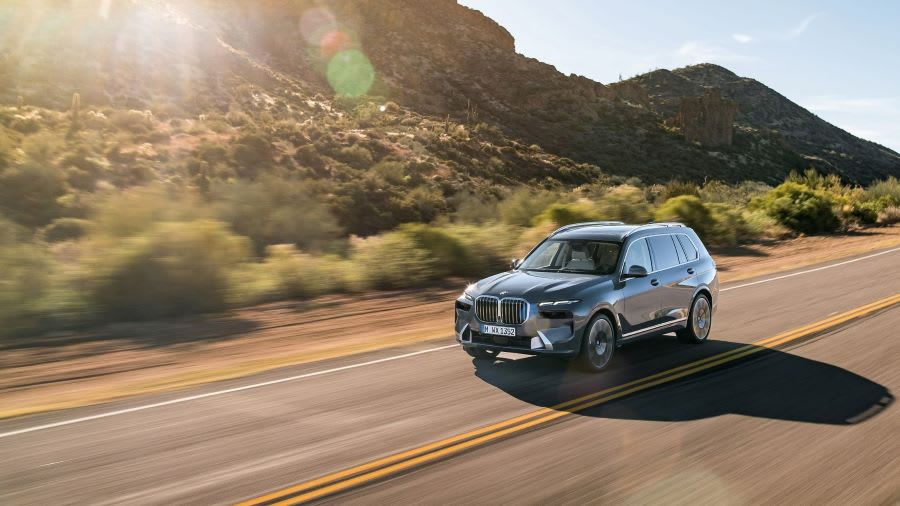
It achieved 91 per cent for adult occupants, 87 per cent for kids and 81 per cent for safety assists, with the X5 achieving not dissimilar results in its safety assessment in 2018.
Safety tech on the BMW X7 includes automatic emergency braking, rear cross-traffic alert, cruise control with brake function (which keeps you the same distance from the vehicle in front), and Parking Assistant, which includes parking sensors, a reversing camera, and Reversing Assistant.
Driving Assistant Professional is available as an optional extra, adding lane departure warning, lane change warning, approach control warning, rear collision prevention, lane centring, and lane keep assist.
Options
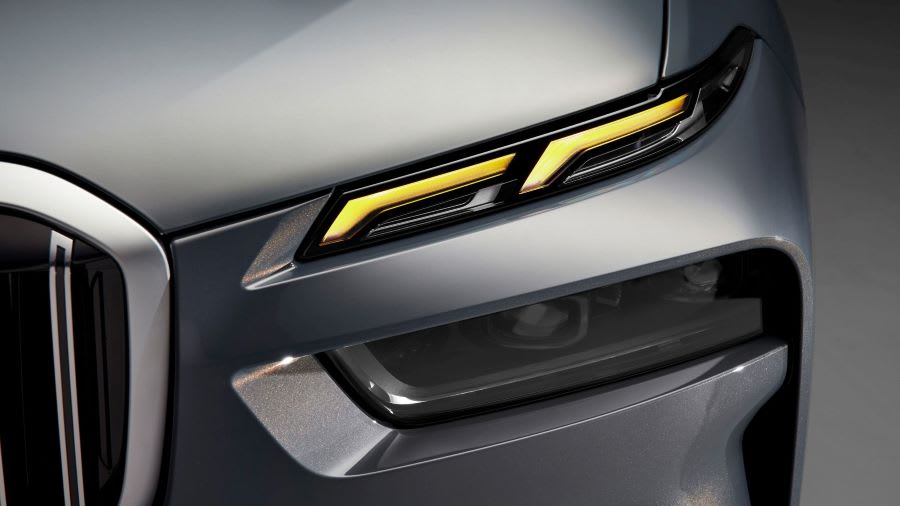
The Excellence trim comes with 21-inch alloys, which should be ample for anyone.
If for some reason, it isn't, then you can upgrade to 22 or even 23 inches, although neither is cheap, and, for us, this is excessive as it will negatively impact the BMW’s ride comfort.
The M version comes with 22-inch alloys, but you can upgrade to 23 inches.
There is a raft of body colours to choose from, which do vary slightly depending on which trim you pick.
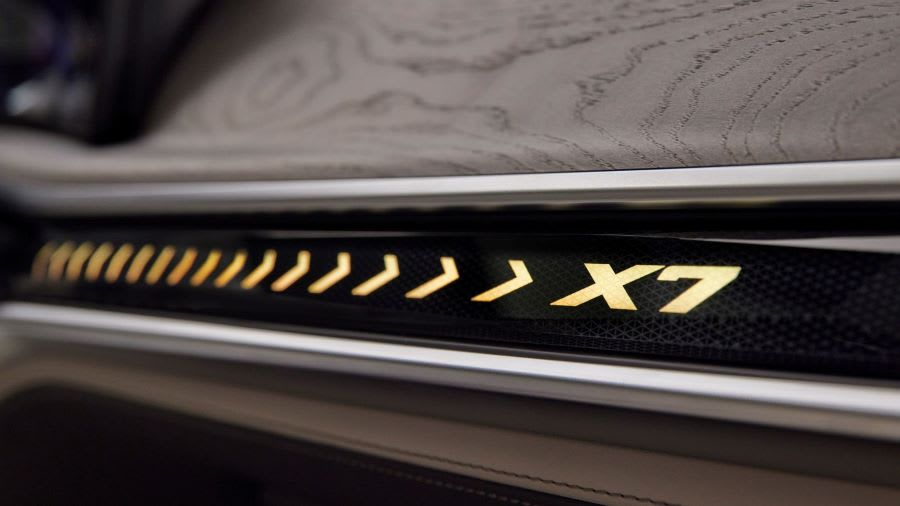
Other choices include leatherette or genuine leather upholstery with various colour combinations.
Given the cabin feels a little dark and needs a touch-up in terms of luxury, a lighter colour contrasting against dark upholstery gives it that little extra kick.
You can add a panoramic glass sunroof, while the Comfort Plus Pack adds five-zone air conditioning, front massage seats, front and rear heated seats, a heated steering wheel and even heated front armrests in the doors.
Sport brakes are also on the list, along with exterior styling tweaks and the Technology Plus Pack, which adds a Bowers and Wilkins diamond surround sound system.
Most of the items in the packs can be added individually, or you could go for the mega-expensive Ultimate Pack, which adds everything.
Rival Cars
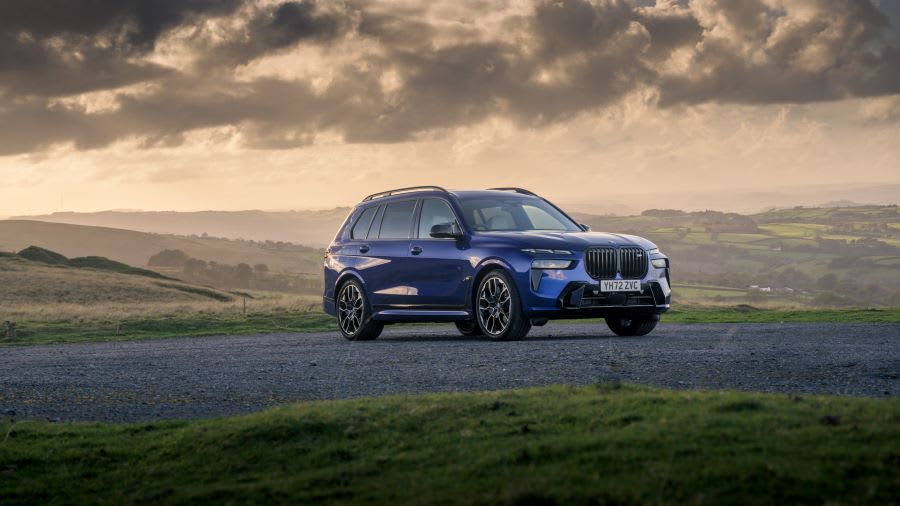
Of course, in launching the X7, BMW hopes to tempt customers away from Land Rover’s Range Rover (below).
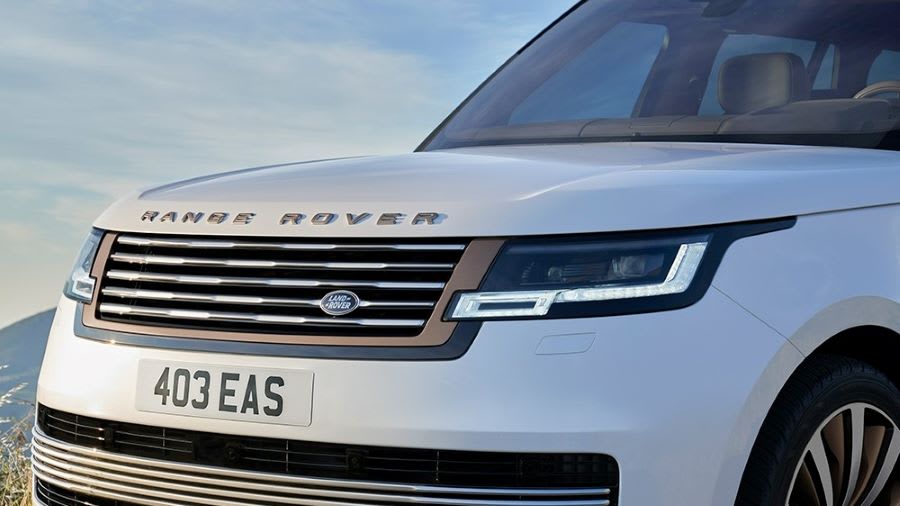
But it’s also keen to tempt BMW fans into parting with more cash, as they’d likely have gone and chosen a cheaper X5 instead.
Speaking of money, the running costs of a BMW X7 are prohibitive for many company car drivers, but the smaller X5 does offer a plug-in variant, as does the Range Rover and the rather excellent Audi Q7(below).
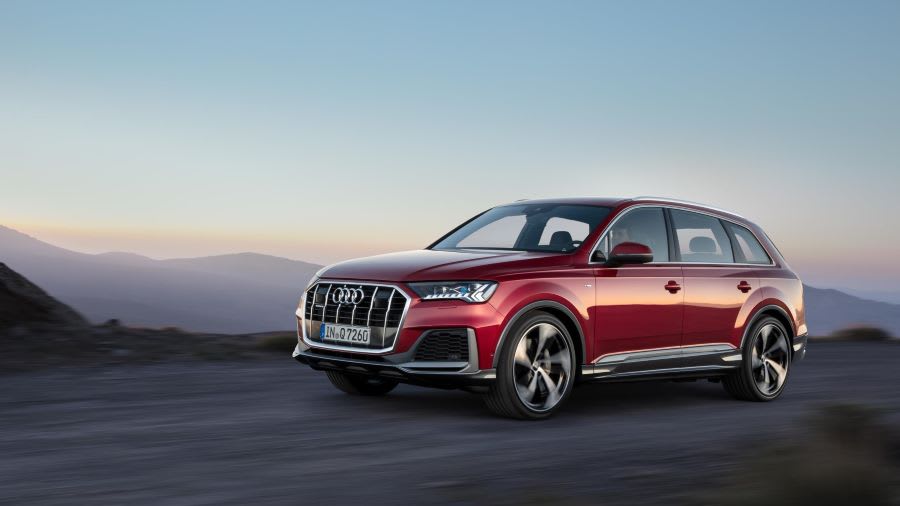
Both are formidable enemies to the X7, along with the very opulent Mercedes-Benz GLS, and all of them are well worth adding to your leasing shortlist.
The BMW X7's diesel can outpace the equivalent Range Rover and Mercedes-Benz GLS, but if ride comfort is the priority, then the Audi Q7 is arguably the class leader.
However, regardless of its enormous wheels, the BMW X7 is just slightly behind.
Verdict & Next Steps
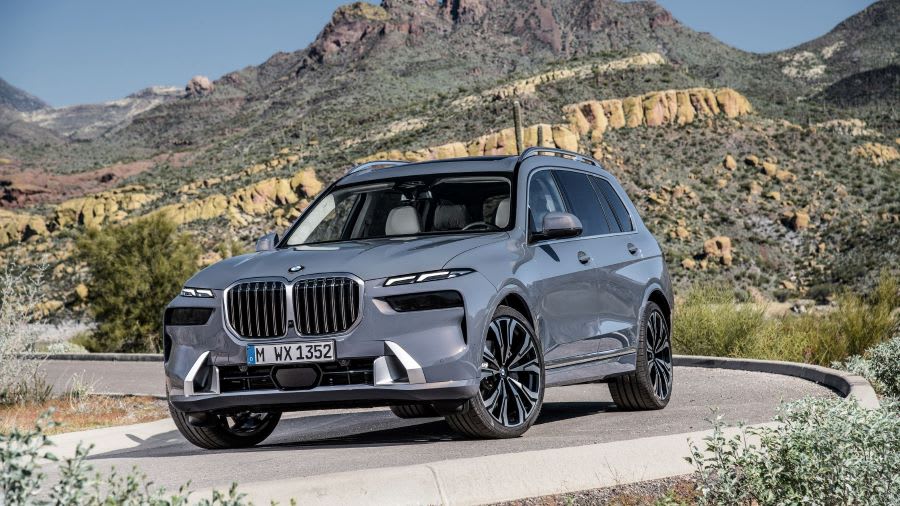
Overall, the BMW X7 is genuinely excellent.
It is very spacious, offers decent practicality, and is well equipped with refined engines full of performance.
It even handles well by big SUV standards, plus it's hushed and comfortable.
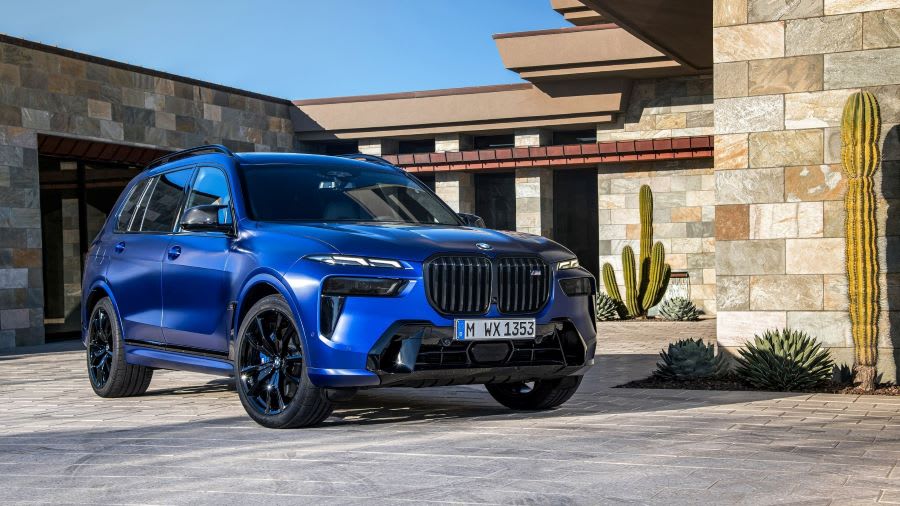
On the other hand, it's costly, the looks are awkward, and you'll likely need to spend a bit on optional extras to get the whole X7 experience.
The M Sport trim is our pick, as it's more attractive. The interior is charming, but it’s shaded by Audi Q7’s cabin. At the same time, the Range Rover and even the Mercedes-Benz GLS offer a layer of razzle, sparkle, and splendour that’s a level above the BMW X7, despite its well-refined cabin.
Nevertheless, as premium SUVs go, BMW has well and truly arrived at the party.
Where to next?
View our latest BMW X7 lease deals - from just £980.75 per month inc VAT**
Looking for a great leasing deal? Check out our incredible range of Special Offers
New luxury SUV? Read our latest Car Reviews and find the right model for you
Want to know more about leasing? Take a look at our comprehensive Leasing Guides
Interested in everything motoring? Why not catch up on all the latest Car Leasing News.
*Score based on Select’s unique meta score analysis, taking into account the UK’s top five leading independent car website reviews of the BMW X7
**Correct as of 23/12/2022. Based on 9 months initial payment, 5,000 miles over a 48 month lease. Initial payment equivalent to 9 monthly payments or £8,826.66 Ts and Cs apply. Credit is subject to status.




















